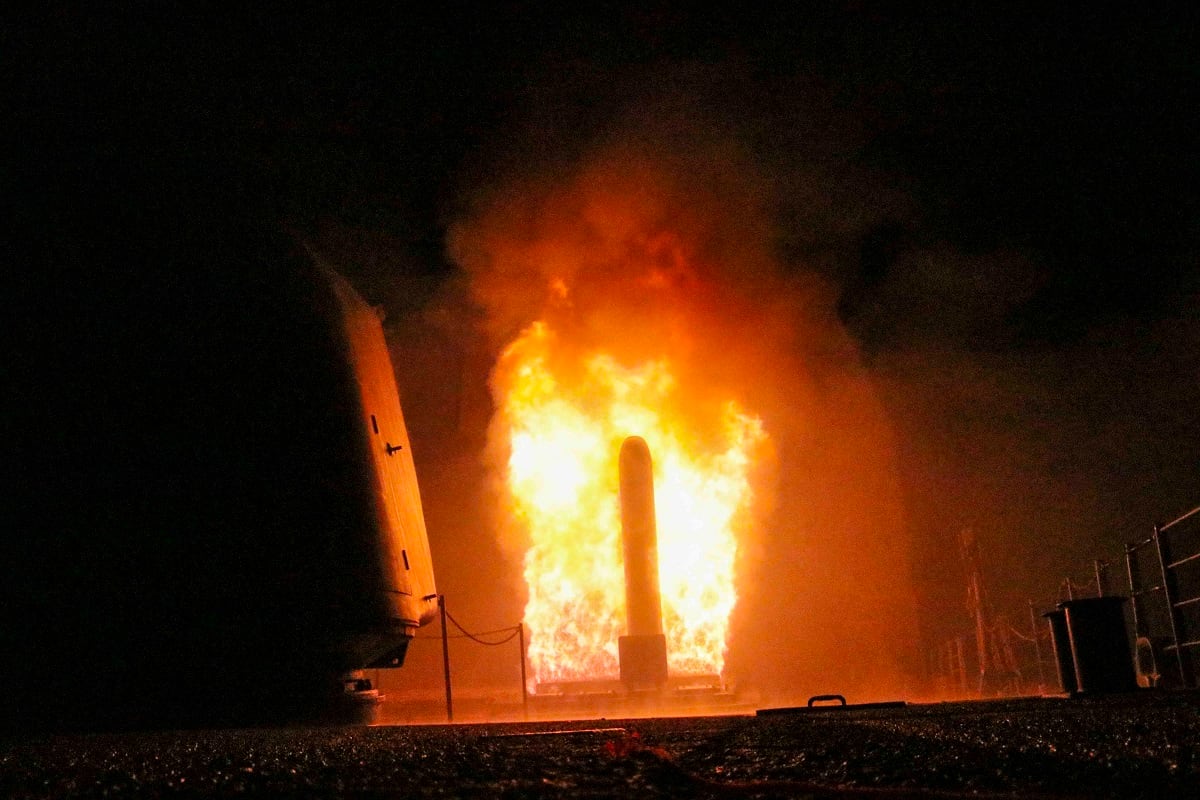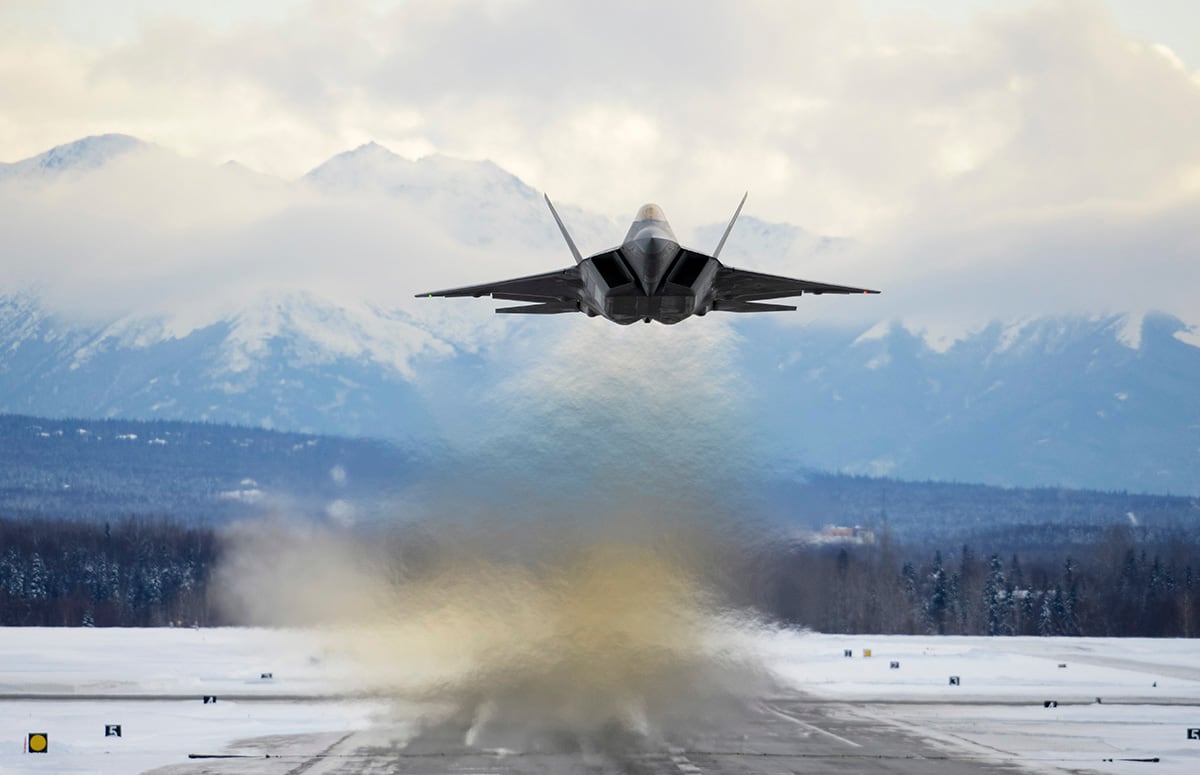The Pentagon on Thursday corrected the record on the use of an advanced air-to-surface missile and the F-22 Raptor fighter during the April 13 strike on Syrian regime chemical weapons facilities.
Marine Corps Lt. Gen. Kenneth McKenzie, director of the Joint Staff, originally said during an April 14 briefing that the Air Force had launched 19 of the advanced JASSM-ER, or Joint Air-to-Surface Standoff Missile-Extended Range, weapons from B-1 bombers.
This would have been the first time the JASSM-ER had been used in combat.
McKenzie also said during that Pentagon briefing that because no allied air assets entered Syrian airspace, no F-22s were used to accompany and protect the B-1s.
RELATED

However, those statements have turned out to be incorrect.
In another briefing on Thursday, McKenzie said he “misspoke” when he first said the JASSM-ER was used. The military actually used the standard JASSM weapons.
But in an email, U.S. Air Forces Central Command spokesman Capt. Mark Graff said it represented the first operational use of any variant of the JASSM.
Graff also said that “F-22 Raptors played an integral role in protecting ground forces during and after the multinational strikes against Syrian chemical weapons production facilities.”
“Thanks to its unique fifth-generation capabilities, the F-22 was the only airframe suited to operate inside the Syrian integrated air defense system, offering an option with which to neutralize IADS threats to our forces and installations in the region, and provide protective air support for U.S., coalition and partners on the ground in Syria,” Graff said. “Fifth-generation platforms like the F-22 and the F-35 will continue to serve as the primary platforms capable of operating in the lethal threat rings of IADS environments like those found in Syria.”
McKenzie could not confirm Thursday whether Raptors were used, but said “any U.S. fighter aircraft that were employed in this operation were employed as part of an integrated package in the CENTCOM [area of responsibility] for protection of the bombers.”
“No fighter aircraft penetrated further than where B-1s actually launched the JASSMs and turned away,” McKenzie said. “So, none of them actually went forward from that point, they were used simply as part of the integrated package.”
Pentagon bureau chief Tara Copp contributed to this report.
Stephen Losey is the air warfare reporter for Defense News. He previously covered leadership and personnel issues at Air Force Times, and the Pentagon, special operations and air warfare at Military.com. He has traveled to the Middle East to cover U.S. Air Force operations.




